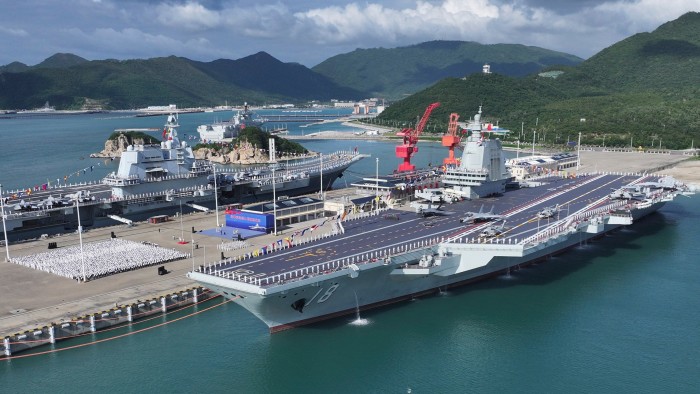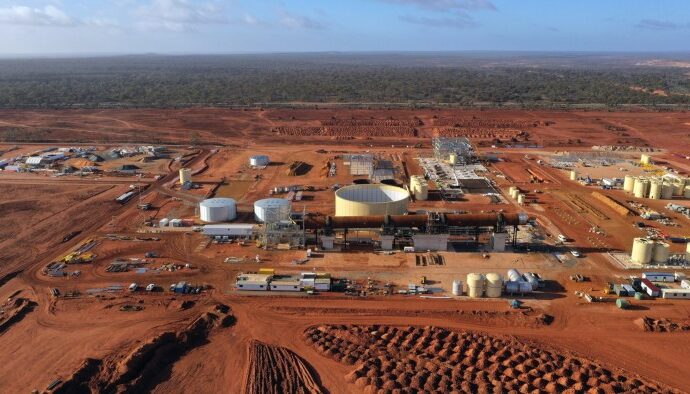
Unlock the Editor’s Digest for free
Roula Khalaf, Editor of the FT, selects her favourite stories in this weekly newsletter.
China’s third aircraft carrier has officially entered service, boosting the country’s military power far beyond its shores.
Chinese leader Xi Jinping oversaw the commissioning of the Fujian — the first carrier both developed and built domestically — in a ceremony on the southern island of Hainan on Wednesday, state media announced on Friday.
The move comes as the People’s Liberation Army is rapidly catching up with the US military, which has dominated the Indo-Pacific since the second world war.
The new ship resembles the US’s newest carrier class, the Gerald Ford, in that it has three electromagnetic catapults to launch fighter jets, instead of the ramps that help aircraft take off from the PLA’s two previous carriers.
But in contrast with the nuclear-powered Gerald Ford, the Fujian uses conventional propulsion, which could limit its range.
A fourth carrier is under construction, and Chinese military texts — such as textbooks and academic papers by PLA-linked figures — suggest Beijing is planning several more.
The Chinese Communist party is pursuing a cutting-edge military that can rival US forces to gain dominance in its “near abroad”, where it has territorial disputes with several neighbours, but also to project power further afield and secure its increasingly global economic interests.
Xi Jinping has set a goal of fully modernising the PLA by 2035 and building it into a “world-class” force by 2049 — a phrase understood to indicate becoming a peer to US forces.
Beijing claims sovereignty over de facto independent Taiwan and vows to bring it under its control, using military force if necessary.
China also claims the South China Sea in its entirety — clashing with several south-east Asian neighbours’ claims and rights under international law — and has a dispute with Japan over a group of islets.
Since the US has left it ambiguous whether its military would directly help to defend Taiwan against a Chinese attack, the PLA’s training for a war over the island includes operations to counter US forces in the Pacific.
Modern military technology, including drone swarms and missiles designed to hit moving ships at sea, has made aircraft carriers vulnerable to attack and undermined the central role they long played for US forces. But China views them as a key symbol of comprehensive national power and considers them vital for denying the US military dominance of the waters and airspace in the western Pacific.
The Fujian’s commissioning reflects accelerating progress in China’s military shipbuilding and naval operations.
The PLA procured its first carrier, the Liaoning, as an unfinished Soviet-era hull from Ukraine in 1998 and spent more than a decade completing it before commissioning it in 2012.
The Shandong, the second aircraft carrier, was built domestically copying the Liaoning model, and entered service in late 2019.
In July this year, the PLA conducted operations with two carriers simultaneously outside the first island chain — running from northern Japan through Taiwan down to the Philippines — that sits between China’s coast and the open ocean.
A Chinese carrier also operated outside the second island chain — extending from central Japan through the Northern Marianas and Guam to Palau — for the first time. Those manoeuvres have brought the PLA’s carriers and the fighters on them much closer to key US air and naval bases in Guam and Hawaii.
The PLA remains far behind the US Navy in carrier operations, but has in recent years quickly increased the pace at which its fighter jets take off from aircraft carriers.


